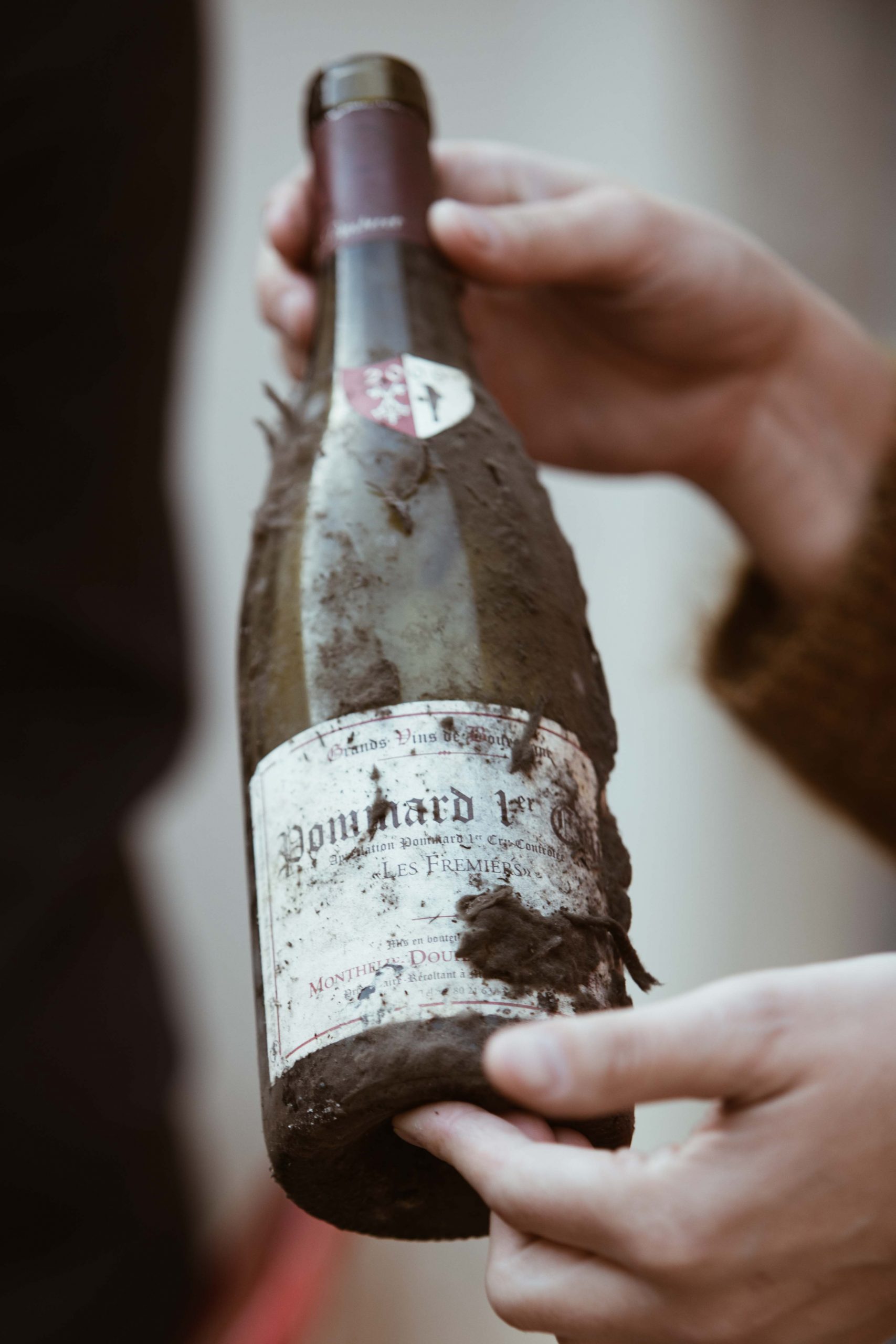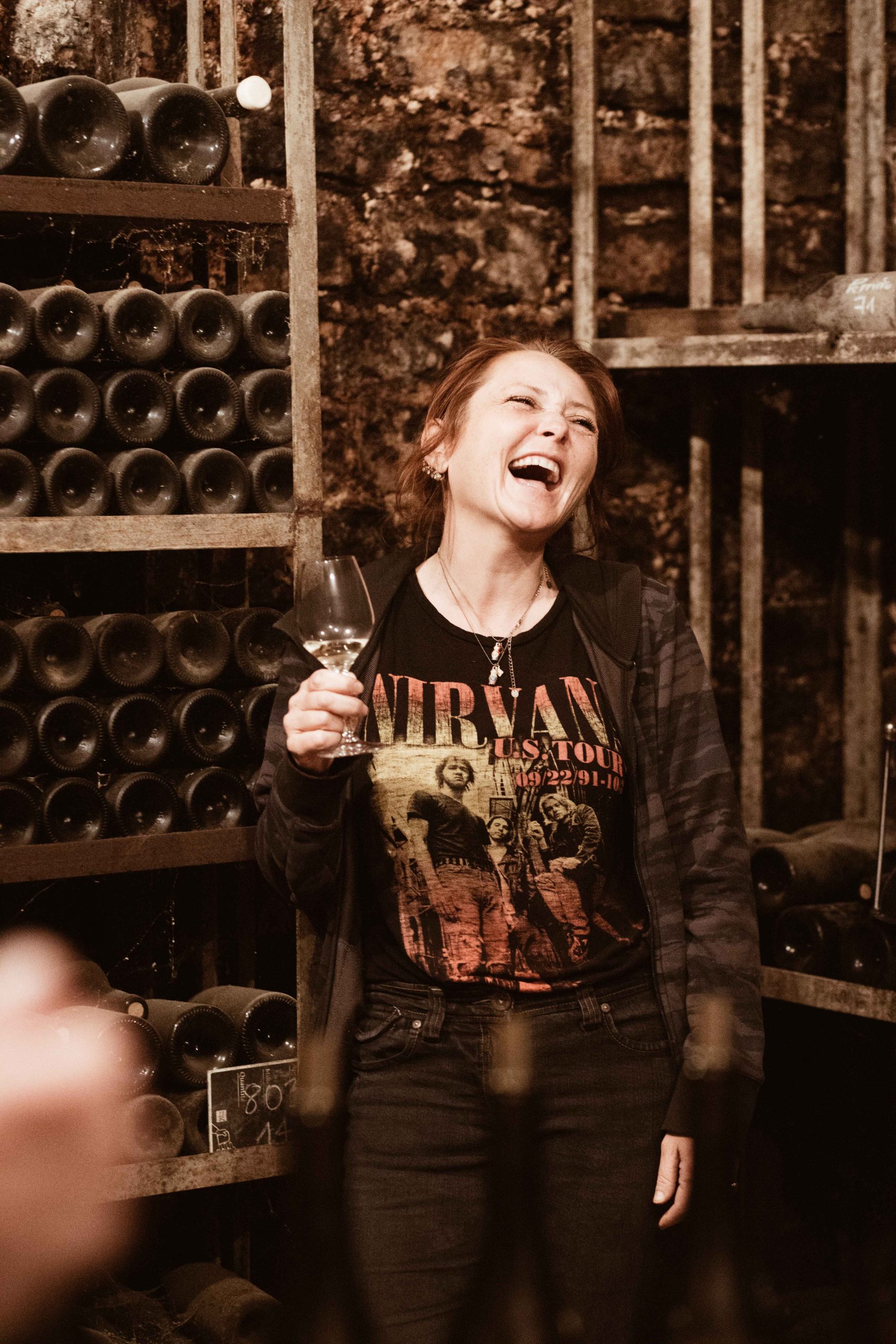Wine aging vessels play a pivotal role in shaping the character and complexity of the final product. From traditional oak barrels to modern materials like concrete and stainless steel, to throwbacks like clay amphorae, each vessel imparts unique characteristics to the wine.
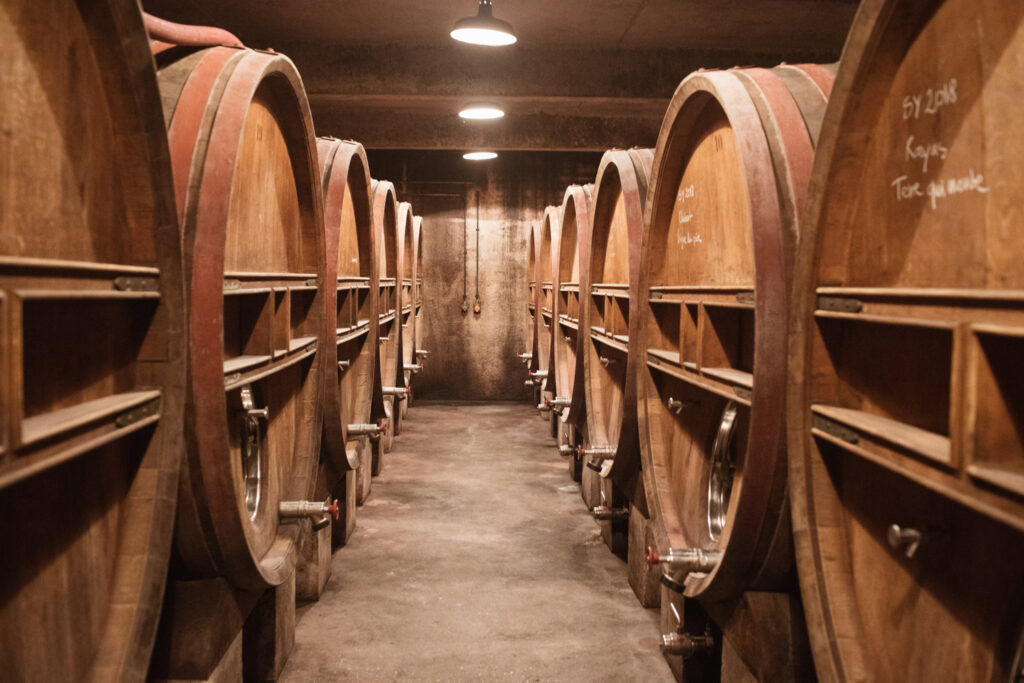
Foudre at Domaine de Trévallon
Foudres, large wooden casks typically made of oak, have long been integral to winemaking traditions. These vessels, with capacities ranging from 1,000 to 3,000 liters, don’t impart oak flavors to the wine. Instead, they allow for a slow and controlled exchange of oxygen. This gentle aging process preserves the purity of fruit. Wines aged in foudre showcase a softer texture with well-integrated tannins.
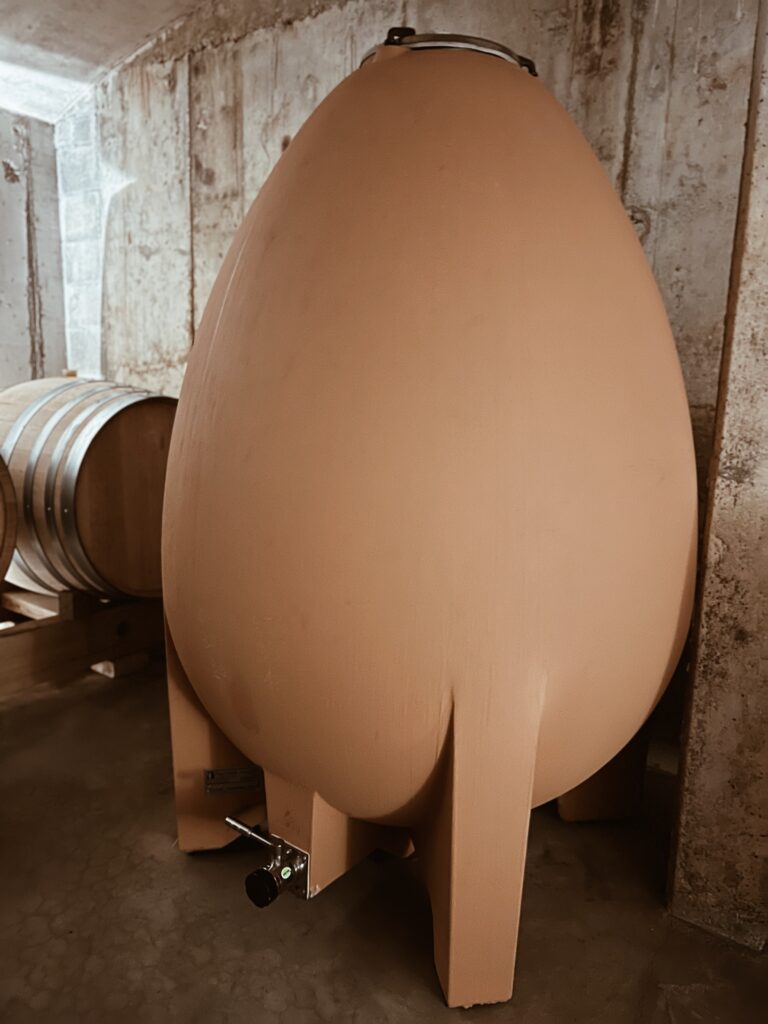
Concrete egg at Domaine du Bouchot
Concrete eggs have emerged as a modern alternative to traditional vessels. The egg shape promotes a natural circulation of wine, and the material provides a slow, consistent micro-oxygenation. This imparts a rounded mouthfeel and increased complexity to the wine thanks to the constant lees contact. Wines aged in concrete eggs often exhibit a balance between freshness and texture, appealing to winemakers seeking a contemporary approach to aging.

Clay amphorae at Domaine Santa Duc
Clay amphorae have been used in aging wine for some 6,000 years, and have seen a recent resurgence of popularity. These vessels offer a porous environment for wine aging that allows for subtle oxygen exchange, contributing to the development of earthy and mineral notes. Amphora-aged wines may exhibit a more textured and grippy mouthfeel, emphasizing the vessel’s influence on the wine’s tactile qualities. Winemakers who center natural and minimal intervention practices often turn to amphorae to enhance terroir expression.
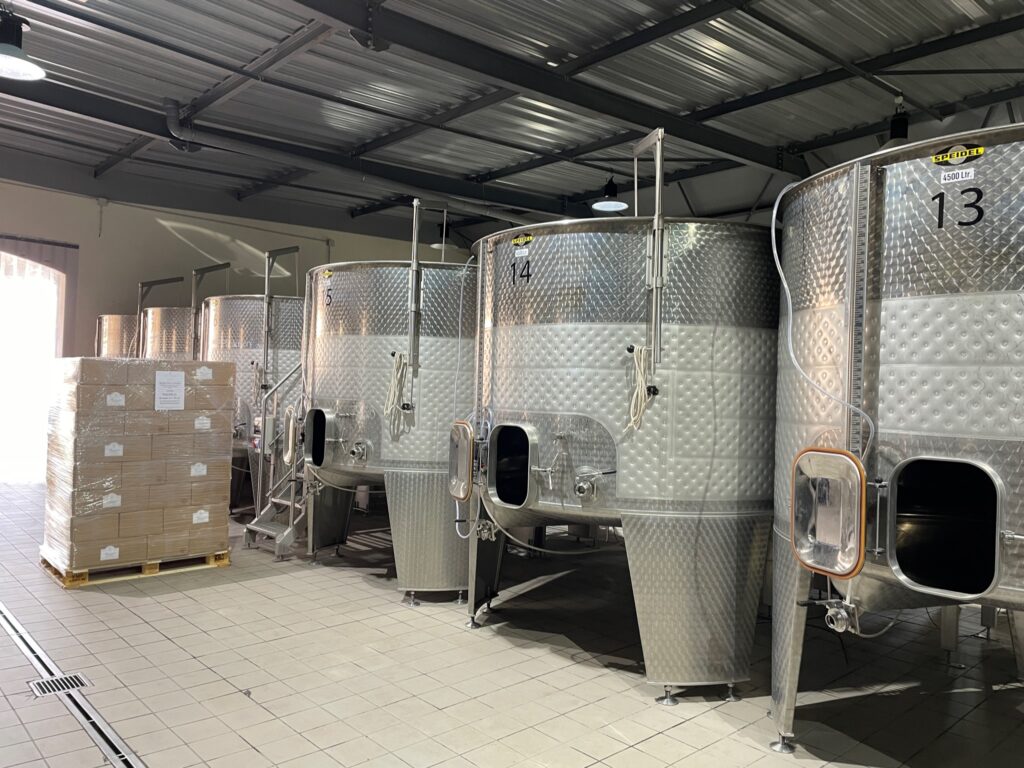
Stainless Steel Tanks at Domaine Charles Audoin
Stainless steel tanks have an inert nature, maintaining primary fruit flavors. The non-reactive material ensures that the wine undergoes minimal oxidation, creating a reductive environment that helps preserve the wine’s crispness and vibrancy. Stainless steel is particularly favored for aromatic grape varieties, allowing them to retain their varietal characteristics without any influence from external elements.

New oak at Domaine Denis Mortet
New oak barriques represent an excellent way to impart structure to wines that are meant for long-term aging. Along with the vanilla, spice, and toasty notes they contribute to the wine, increased tannin extraction contributes the structure needed for extended cellaring. Wines aged in new oak barriques have complexity, depth, and the ability to evolve over time.

Old oak at Domaine Vincent Ledy
In contrast, used oak barriques, having already contributed to previous vintages, offer a more subtle oak influence, allowing for a clearer expression of the grape and terroir. Tannins are softer, and the maturation process is expedited, making wines aged in used oak barriques more approachable at an earlier stage. This vessel is often favored for wines intended for more immediate consumption.
In the diverse landscape of wine aging vessels, each option brings a distinct set of attributes to the winemaker’s toolkit. Whether it’s the time-honored elegance of foudre, the contemporary precision of stainless steel, or the ancient allure of clay amphorae, the choice of vessel is a nuanced decision that reflects the winemaker’s philosophy and the desired style of the final wine. As the world of winemaking continues to evolve, the exploration of different aging vessels stands as a testament to the rich tapestry of possibilities within this timeless craft.



